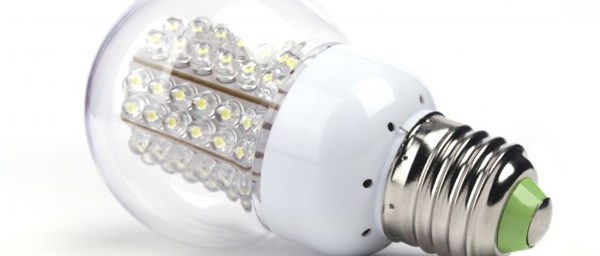TORONTO, Dec. 20, 2012 (GLOBE NEWSWIRE) -- Even if you don't recognize the term "light-emitting diodes," chances are you see them every day. Typically called LEDs, these small light sources, powered by the movement of electrons through a semiconductor material, have long been used in everyday appliances: they form the numbers on digital clocks, they light up watches, and they transmit remote control signals, just to name a few uses. LED lights also are used in applications as diverse as aviation lighting, automotive lighting (particularly brake lights and turn signals), traffic signals, and medical equipment.
LEDs have so many uses largely because plastics help make them lightweight, durable, and versatile. Plastics serve several functions in LED lights, depending on the purpose of the light.
Plastics are used in LED lights to protect the light source from damage, which enhances its durability. LED lights typically are protected by a small casing made with a "thermoset" plastic called epoxy that is very hard, durable, and resis tant to heat.
Plastics often are used to combine multiple LED lights in creative ways to make them suitable for a variety of lighting needs in the home, the office, or even outdoors. Plastics are ideal for this purpose because they can be molded into a nearly infinite number of shapes and can be made transparent so that light can shine through. Multiple LEDs can be combined in plastic strips that can be mounted on indoor walls. They also are fashioned into strings of plastic lights, plastic landscape lighting, and even decorative shapes. Whatever the use, plastics help make these lights both functional and stylish while protecting the diode.
Another way plastics are used in LEDs is for light diffusion. In the past, LEDs weren't ideal for lighting homes because they produce small pinpoints of light—or "hot spots"—rather than the diffuse glow consumers have grown accustomed to. But plastics have changed that, opening the door for LEDs to be used as a primary light source in homes. Recently, UK-based Sheffield Plastics introduced a new plastic specifically developed for use with LED lighting. The polycarbonate-based plastic sheet acts as a diffusion lens for LED lighting, reducing the appearance of hot spots from intense LEDs and diffusing light evenly. This helps reduce the direct glare and softens the light.
One of the most innovative developments in LED lighting involves the use of plastics to manufacture the surface that holds the light-producing materials. Made with flexible, transparent polyethylene terephthalate (PET) plastic, this surface is extremely lightweight and can be bent or even rolled without damage, even while the light source is operating. This may lead to revolutionary changes in lighting. Instead of lamps or other conventional light fixtures, large, flexible, plastic LED sheets could be attached to walls, pillars, or even windows. These sheets would be transparent during the daytime but bathe our homes in soft light at night.
One of the greatest benefits of LED lights is their lifetime. LED lights reportedly last longer than traditional light sources such as incandescent bulbs—up to a decade or more, according to some manufacturers.
LEDs also save energy, delivering more than 100 lumens per watt compared to a compact fluorescent lamp's 50 to 70 lumens per watt. A typical 60-watt incandescent light bulb uses 110 KWh of electricity per year; an equivalent LED bulb uses about 11 KWh of electricity per year and lasts 50,000 hours or longer.
Thanks to plastics, the uses for LEDs are moving beyond lighting. For example, plastic substrates now allow technicians to develop rollable LED displays—flexible, lightweight screens for electronic devices that roll or fold up when not in use. This could allow a very small device to connect to a large, full-colour screen.
Plastic innovations continue to inspire new and often surprising uses for LEDs, helping maximize the technology's versatility to transform the way we live.
Today's intelligent plastics are vital to the modern world. These materials enhance our lifestyles, our economy and the environment. For more information visit www.intelligentplastics.ca.
The Canadian Plastics Industry Association is the national voice of Canada's plastics industry, representing the interests of processors, material suppliers, equipment manufacturers and brand owners across the country.
A photo accompanying this release is available at: http://www.globenewswire.com/newsroom/prs/?pkgid=16383
The Canadian Plastics Industry Association logo is available at http://www.globenewswire.com/newsroom/prs/?pkgid=12287
